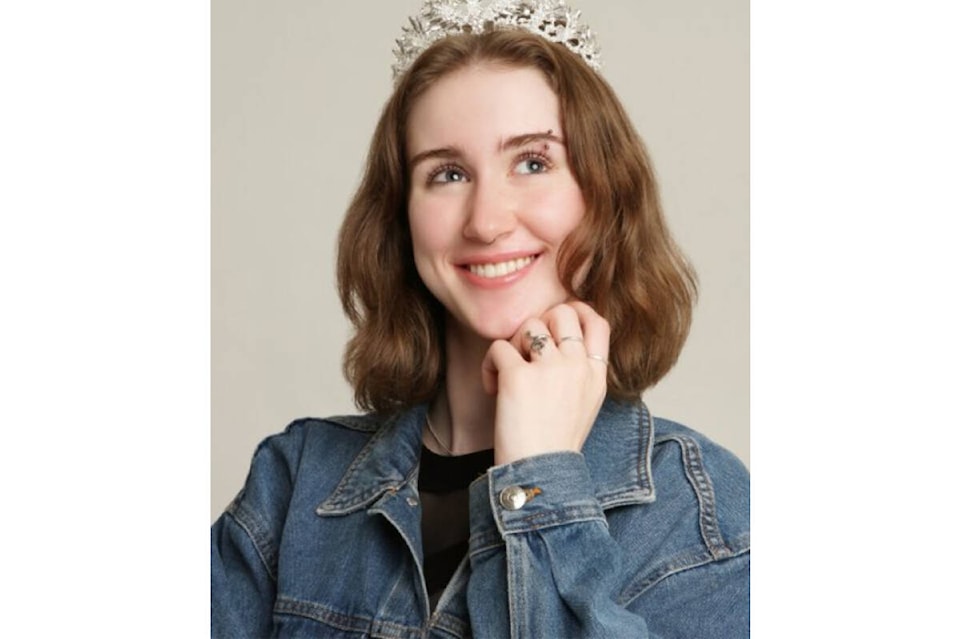The University of Victoria says it’s making changes following the January death of an 18-year-old student who fatally overdosed on fentanyl in her dorm room.
Sidney McIntyre-Starko was a first-year general sciences student who loved to play board games with family, read fantasy books, and craft and build furniture, according to a website set up by her family. She died on Jan. 29 in what her loved ones say was an entirely preventable incident.
After obtaining witness statements and a 911 call through freedom of information requests, McIntyre-Starko’s parents said they are confident the university and 911 operator could have saved their daughter’s life if they had acted differently.
McIntyre-Starko’s incident took place on Jan. 23. Three days prior, there was an opioid overdose on campus that required naloxone from campus security.
Records published online reveal that on Jan. 23, McIntyre-Starko and another student collapsed onto their dorm floor just after 6:30 p.m. after they were exposed to fentanyl. A third student who was also impaired managed to call 911 and tell an operator they needed emergency help. It took more than seven minutes to dispatch paramedics, according to the records.
At the same time, campus security was also called. They arrived in less than three minutes to find McIntyre-Starko and the second student “unconscious” and in “respiratory distress,” yet waited nine more minutes to administer naloxone and 12 minutes to provide CPR. Campus security working that night were not made aware of the overdose that occurred on Jan. 20.
Naloxone is extremely effective at reversing overdoses if it’s administered quickly enough.
McIntyre-Starko was taken to hospital later that night but on Jan. 26, she was declared brain dead.
According to her family, the university also failed to contact them while everything was happening. They only found out when a student contacted McIntyre-Starko’s brother.
Jessica Maclean, UVic’s director of campus security, said they have learned lessons from what happened and are committed to implementing changes.
The lessons from McIntyre-Starko’s death were shared among other universities and campuses across B.C. so that other academic institutions could learn from her death, Maclean said.
Some of the changes made by UVic after McIntyre-Starko’s death include:
• Training campus security members internally to ensure it is more customized, and hiring a new training coordinator to provide oversight on this.
• Updating the pre-arrival and in-person orientation programming and the Community Living Handbook to include a new section on harm reduction and safety supports.
• Ensuring communication with students throughout the school year includes information on where students can access naloxone. A complete list of supplies available for students can be found here.
• Increased education, awareness and training options for the student community, including student staff working in residences.
• Reviewing its protocols for emergency-contact notifications to ensure that emergency contacts receive timely and accurate information about their loved ones.
Training, support and education around opioids and harm reduction are available for students at UVic through the Wellness Services, said Jim Dunsdon, associate vice-president of student affairs.
“This includes educating our students, staff and faculty about available resources, emergency protocols, and the inherent risks involved with substance use,” he said.
All security officers at the university receive occupational first aid training at level two and certification beyond what is required by the government, according to a statement from UVic.
“Our officers responded immediately and provided life-saving first aid while waiting for emergency responders to arrive. Although that day ended tragically, their efforts are commendable,” Maclean said.
The presence of the toxic drug supply crisis, which is the leading cause of death for people aged 10-29 in the province, is something that Kevin Hall, University of Victoria president and vice-chancellor, is aware of.
The death of McIntyre-Starko is one of the hardest chapters in UVic’s history and according to Hall, the university had shared all of its findings with the family.
“Our campus community is mourning the loss,” Hall said.
UVic says it is looking at expanding naloxone locations around campus and updating its orientation policies about how to access life-saving medicine.
The McIntyre-Starko family is demanding that CPR and naloxone training be made mandatory at B.C. high schools, that nasal naloxone is made free in B.C. and available at all campuses, that harm reduction is made a mandatory part of orientation at high schools and universities, that public health is notified about opioid-related overdoses at high schools and universities, and that the medical response from B.C. universities is reviewed.
The family is also calling for a coroners inquest into McIntyre-Starko’s death, which Premier David Eby committed to during Question Period on May 16.
Eby said the circumstances of McIntyre-Starko’s death were profoundly concerning, as security guards had naloxone on them at the time but did not save her.
“It is a tragedy,” Eby said.
For support, contact the Vancouver Island Crisis Line at 1-888-494-3888 or 911.
To find out more visit sidneyshouldbehere.ca.
Black Press Media has reached out to the McIntyre-Starko family for comment.
READ MORE: Victoria not keeping B.C. in the loop as Pandora bylaw sweeps continue
